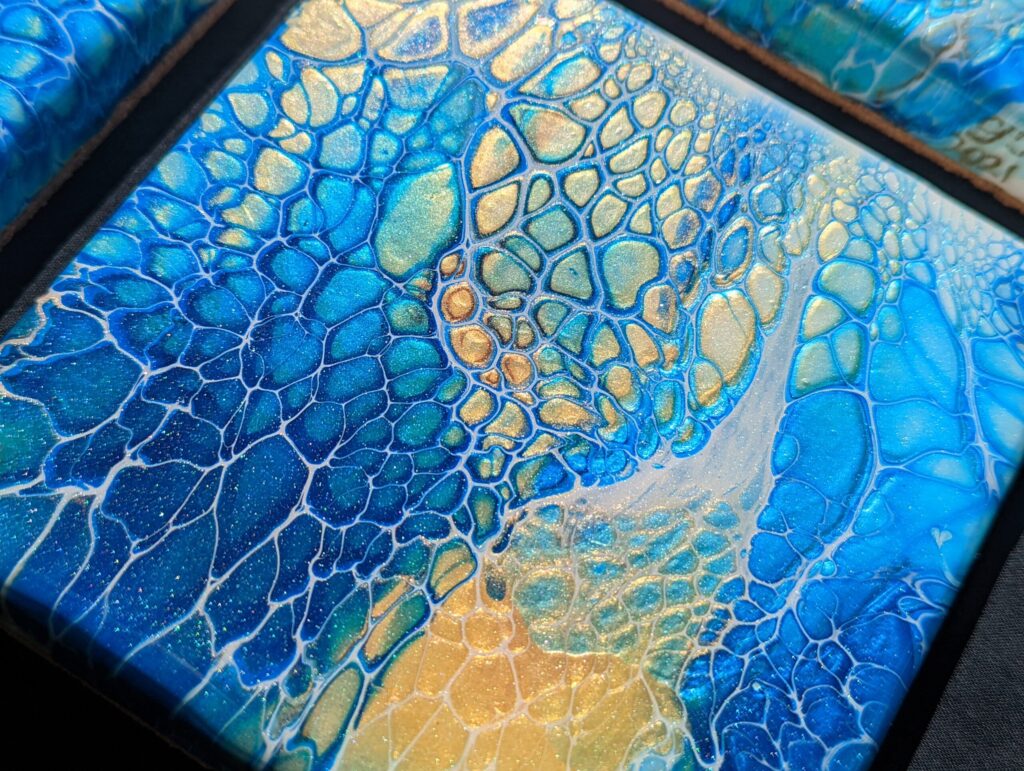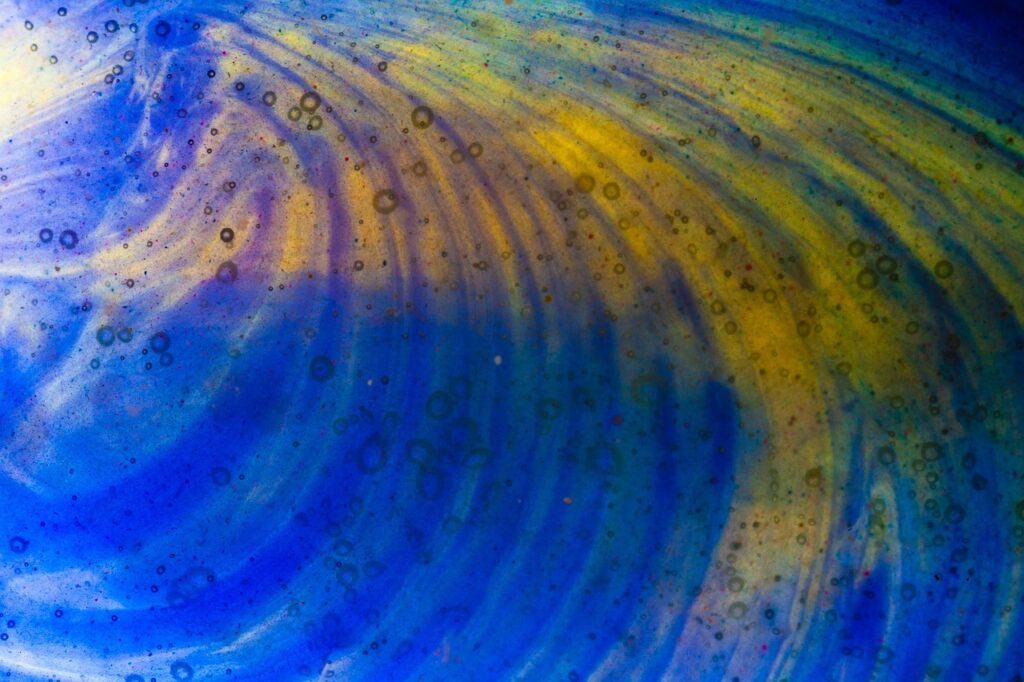Fluid art and acrylic pouring are often used interchangeably, but are they the same thing? Here is an explanation of the relationship between fluid art and acrylic pouring.

Fluid art is a form of abstract art that involves mixing acrylic paints with different mediums to create various effects. This form of art can get highly technical, and in my opinion is bordering on a science. Some swipe techniques require skillful pallet knife work that takes years to truly master. The artist will typically then use ’tilting’ and/or ‘spinning’ to move the paint into the desired composition and to remove excess paint. If too much paint is left on the canvas the artwork can be ruined by crazing, cracking or overdeveloping.
Acrylic pour, on the other hand, is a specific type of fluid art that involves using pouring mediums and various layering techniques to create artworks. Some of these techniques include the dirty pour, flip cup, and puddle pour which are typically coupled with “tilting”.

In other words, fluid art is a broad term that refers to any art form that involves the use of fluids to create visual effects, while acrylic pour is a specific type of fluid art that involves simple techniques and pouring mediums in combination with acrylic paints.
There is however a lot more that goes into fluid art than meets the eye. For example:
- The consistencies of your paints dictate how your paints will behave together. To get specific results the consistencies of every one of your paints have to be on point.
- Seeing as the paint liquid, how level the painting is kept throughout the drying process will alter the dried results.
- Allowing the paint to dry too quickly, where the surface paint dries before the deeper paint, creates cracking and can ruin a piece before it’s had a chance to dry.
- Layering of the paints has a huge effect too, seeing the paint is liquid, the weight and density of the pigments will alter how they behave at different levels.
- Exact recipes and brands matter. If a paint supplier changes its recipe, the product will no longer behave exactly the same. Problems have been noted in the fluid art community even between batches of pouring mediums.
- Temperature and humidity change how the paints behave
Fluid art has gained popularity in recent years due to the stunning visual effects that can be achieved with these techniques. Both fluid art and acrylic pour are exciting and accessible art forms that can be enjoyed by artists of all levels. While it takes experience and a lot of practice to master the artform, anyone can have a crack and produce something striking at least some of the time. Whether you are interested in experimenting with fluid art or exploring the techniques of acrylic pour, these art forms offer endless possibilities for creativity and self-expression. Not to mention it’s a lot of fun! Though rather messy…
